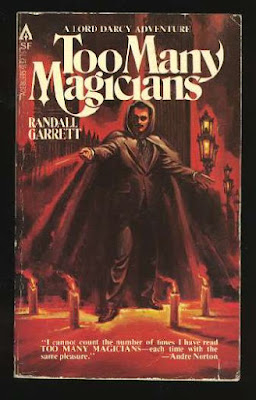It's the 24th century and crime is practically non-existent in the world thanks to a highly developed psychic police force and other Espers who can read the minds of individuals with criminal tendencies. The Espers using their psychic powers weed out the criminal thought patterns and can put an end to the crime before it even begins. Multimillionaire Ben Reich is determined to acquire the business of his rival D'Courtney. When D'Courtney refuses to accept his business offer after several Reich decides to eliminate his competition thus making it easier to acquire his business. He enlists the aid of an easily corrupted and bribeable Esper, buys an ancient 20th century pistol from a crooked pawnshop dealer, and carries out his murder plan on the night of a hedonistic party at the home of D'Courtney's wealthy and addle-brained neighbor.
But the plan goes awry. D'Courtney's daughter interrupts Reich in the very act of the crime. She witnesses Reich shoot her father and flees the house clad only in a nightgown. Reich then pursues her thinking it should be easy since she is inappropriately dressed and that ought to slow her down, but she manages to elude his capture. The hunt is on for her so that his crime can be the perfect one he planned.
On the very first page I knew this was going to be something unique. Here is a sample of the unusual ideas Bester employs in his futuristic setting:
From the opening paragraph in which we learn that Reich is being haunted by a recurring dream starring "The Man With No Face" to the strangely named characters with symbols in parts of their names (Sam @tkins, Duffy Wyg&) or just plain strange (Chook Frood, Snim Asj) to the satellite of a faraway planet that has become an adult playground that goes beyond even the fantasies of Westworld to the deadly weapon Reich uses that is a weird combination of pistol and knife (see the excellent realization in the UK DJ at left) this book is jammed pack with originality. Nearly everything may seem old hat to a modern reader because it has been heavily borrowed from by writers like Dick, Vonnegut and dozens of SF screenplay writers. This book held me in its spell for a brief day and a half. I couldn't get enough of it and sped through the pages at a lightning pace.He lay quietly in the hydropathic bed while his heart shuddered and his eyes focussed at random on objects in the room, simulating a calm he could not feel. The walls of green jade, the nightlight in the porcelain mandarin whose head nodded interminably if you touched him, the multi-clock that radiated the time of three planets and six satellites, the bed itself, a crystal pool flowing with carbonated glycerine at ninety-nine point nine Farenheit.
I know this is hardly a forgotten book among the SF cognoscenti, but I'm not part of that elite bunch. To those of you who don't read any SF for fear it will brand you "one of the geeks" (as I once feared ages ago) forgive me while I lapse into my fanatical mode. READ THIS ONE! It's science fiction for people who don't like science fiction and it will change your opinion of the entire genre. I am sure of it. Now I'm on the hunt for Bester's others works including The Stars My Destination which I found last year in its 1st paperback edition and foolishly passed it up, placed it back in the box where I found it only to see it snapped up immediately by a young woman standing right next to me. One of the cognoscenti, no doubt.








































